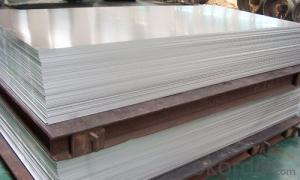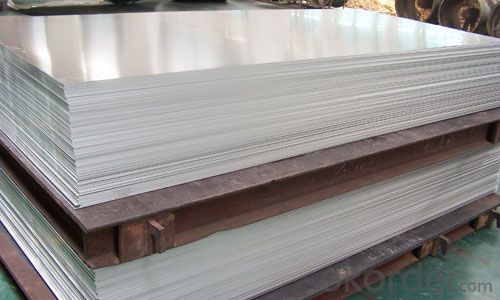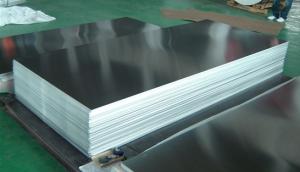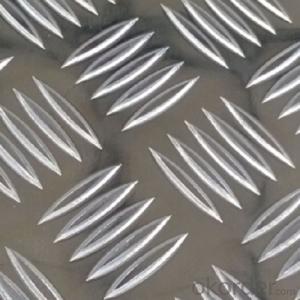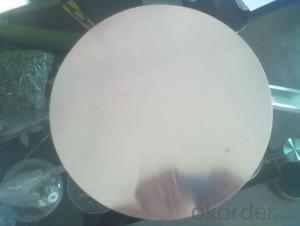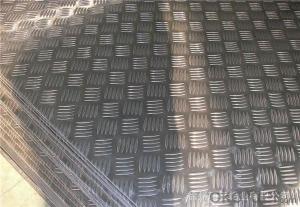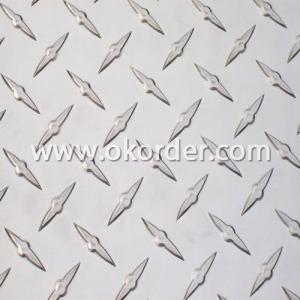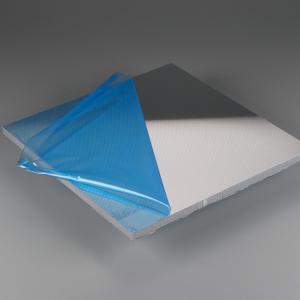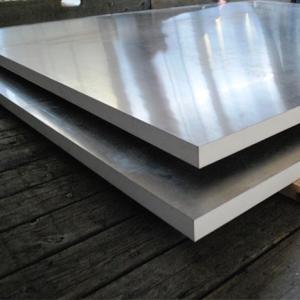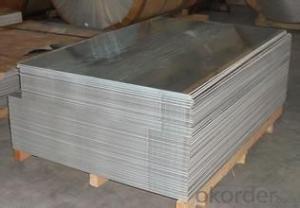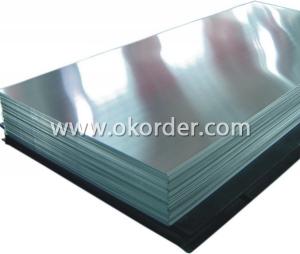Aluminum Siding Sheets (0.3mm Aluminum Plate)
- Loading Port:
- China Main Port
- Payment Terms:
- TT OR LC
- Min Order Qty:
- -
- Supply Capability:
- -
OKorder Service Pledge
OKorder Financial Service
You Might Also Like
quenching production line, tension straightening machine of pure Italian SELEMA, Germany HEGELISI CNC grinding machine, 1850m / m (1 +3) hot-rolling production line, led by the joint development of domestic and foreign, with the world’s most advanced secondary system, six roller cold rolling mill 1850 elevated four, three 2000mm aluminum foil rolling mill equipped with most advanced international level of the Swedish ABB AFC / AGC automatic flatness control system, as well as the column coating machine, packing machine out . Advanced and reliable technology solutions to achieve the project high-tech and high product quality goals
Width:80-1650mm,Lemper:500-6000mm,Thickness:0.3-15mm.
Alloy:1050、1060、1100、1200、1235、3003、3004、3A21、3102、3105、5052、8011.
Temper:H26、H28、O、F、H12、H14、H16、H18、H19、H22、H24、
The application field of aluminum is very widely, now our company involves and formed using scale main areas for signs of dial, antiseptic building engineering, vehicle manufacturing, refrigeration, electrical appliance manufacturing and pharmaceutical advertising decoration curtain wall industry
- Q: Can 101 aluminum sheets be used in the production of consumer electronics?
- Yes, 101 aluminum sheets can be used in the production of consumer electronics. Aluminum is a versatile and lightweight material that is commonly used in the manufacturing of various electronic devices such as smartphones, laptops, tablets, and other consumer electronic products. It offers excellent thermal conductivity, corrosion resistance, and electrical conductivity properties, making it suitable for use in electronics. The specific grade of aluminum, such as 101, may have different characteristics that make it suitable for different applications. However, without more information about the specific requirements of the consumer electronics being produced, it is difficult to determine if 101 aluminum sheets are the most appropriate choice.
- Q: I have heard that drinking from aluminum cans is bad for our health. However, I have learned that today's 'aluminum' cans are actually more like a plastic can due to all the coatings, etc. Do we really have any risks associated with regular cans?
- This Site Might Help You. RE: Are today's aluminum cans bad for our health? I have heard that drinking from aluminum cans is bad for our health. However, I have learned that today's 'aluminum' cans are actually more like a plastic can due to all the coatings, etc. Do we really have any risks associated with regular cans?
- Q: Are aluminum sheets suitable for decorative purposes?
- Yes, aluminum sheets are suitable for decorative purposes. Aluminum is a versatile material that can be easily manipulated into various shapes and designs, making it ideal for decorative applications. It can be cut, bent, and formed into different patterns, allowing for endless possibilities in creating decorative elements. Additionally, aluminum sheets can be coated or painted in different colors and finishes to further enhance their aesthetic appeal. Furthermore, aluminum is a lightweight and durable material, which makes it suitable for both indoor and outdoor decorative use. It is resistant to corrosion, ensuring that the decorative elements made from aluminum will retain their appearance and last for a long time. Overall, aluminum sheets offer a wide range of design possibilities and practical benefits, making them an excellent choice for decorative purposes.
- Q: Can aluminum sheets be used for solar panel frames?
- Yes, aluminum sheets can be used for solar panel frames. Aluminum is a popular choice for solar panel frames due to its excellent strength-to-weight ratio, corrosion resistance, and durability. These characteristics make it a suitable material for supporting and protecting solar panels, which are typically installed in outdoor environments. Aluminum frames provide structural stability and ensure the longevity of solar panels by protecting them from environmental factors such as wind, rain, and snow. Additionally, aluminum is easily recyclable, making it an environmentally friendly choice for solar panel frames.
- Q: What is the corrosion resistance of 101 aluminum sheets in saltwater environments?
- The corrosion resistance of 101 aluminum sheets in saltwater environments is generally considered to be good. However, prolonged exposure to saltwater can still cause some level of corrosion over time.
- Q: Aluminum knowledge. What is the model 3003 H24? What does H mean?
- 3003 is aluminium manganese alloy aluminum plate (Al--Mn), which is mainly composed of manganese.H24: continuous casting, continuous rolling, Zhang Liqiang and partial toughening.Is the aluminum plate with a thickness of more than 0.2mm to 500mm, 200mm width, length less than 16m aluminum material called aluminum plate or aluminum sheet, aluminum is below 0.2mm, 200mm within the width of the row material or bar (of course, with the progress of the large equipment, the width can be 600mm row material also more). Aluminum sheet refers to the rectangular plate made of aluminium ingot rolled and divided into pure aluminum plate, alloy aluminum plate, thin aluminum plate, middle thick aluminum plate and pattern aluminum plate.Aluminium alloy is added in the process of aluminum alloy elements (main alloying elements copper, silicon, magnesium, zinc, manganese, minor alloying elements such as nickel, iron, chromium, titanium, lithium, etc.) in order to improve the mechanical properties of aluminum and chemical index. Alloy aluminum sheet has some special properties of pure aluminum plate, and is widely used in special environment, such as ship, refrigerator, mould, aerospace equipment, etc..
- Q: What are the electrical conductivity properties of aluminum sheets?
- Aluminum sheets are equipped with exceptional electrical conductivity characteristics. With its low electrical resistance, aluminum finds extensive usage in diverse electrical applications. It boasts a high conductivity rating, marginally lower than that of copper, rendering it an effective electricity conductor. This attribute enables aluminum sheets to efficiently transmit electrical current with minimal energy wastage. Consequently, aluminum is extensively employed in power transmission lines, electrical wiring, and electrical connectors. Moreover, aluminum's conductivity renders it suitable for applications requiring heat dissipation, such as heat sinks in electronic devices. In general, aluminum sheets are renowned for their favorable electrical conductivity, making them a preferred choice in numerous electrical and electronic applications.
- Q: How do aluminum sheets perform in terms of thermal conductivity?
- Aluminum sheets are known for their excellent thermal conductivity. They have one of the highest thermal conductivity among common metals, making them highly efficient in transferring heat. This property allows aluminum sheets to quickly absorb and distribute heat, making them ideal for applications where heat needs to be dissipated or transferred rapidly. Additionally, their high thermal conductivity also ensures uniform heat distribution across the surface, minimizing hot spots and enhancing overall heat transfer efficiency. Overall, aluminum sheets are widely recognized for their exceptional thermal conductivity, making them a popular choice in various industries such as automotive, aerospace, and electronics.
- Q: It seemed in my experiment that aluminum wasn't reactive at all in the displacement reactions, except with copper sulfate. Is there a reason? or did I make a mistake? aluminum is more reactive than e.g silver nitrate, why didn't it react with it?
- Aluminium has a protective coating of Aluminium Oxide, this prevents many chemicals reaching the surface. This is because aluminium has a very strong affinity for oxygen and bonds to it with extremely strong bonds. It can be removed by dipping it carefully into a solution of Mercury (II) Chloride.
- Q: Can aluminum sheets be used for kitchen backsplashes?
- Kitchen backsplashes can indeed utilize aluminum sheets. Aluminum, a versatile and durable material, finds common use in various applications, including kitchen backsplashes. It boasts several advantages, such as its lightweight nature, resistance to corrosion, and ease of cleaning. Aluminum sheets are also easily cut and installed, making them a favored choice for contemporary kitchen designs. Moreover, they come in a wide array of finishes and colors, allowing homeowners to discover a style that complements their kitchen décor. In conclusion, aluminum sheets serve as an exceptional option for kitchen backsplashes, thanks to their practicality, aesthetic appeal, and ability to withstand the demands of a bustling kitchen environment.
Send your message to us
Aluminum Siding Sheets (0.3mm Aluminum Plate)
- Loading Port:
- China Main Port
- Payment Terms:
- TT OR LC
- Min Order Qty:
- -
- Supply Capability:
- -
OKorder Service Pledge
OKorder Financial Service
Similar products
Hot products
Hot Searches
Related keywords

